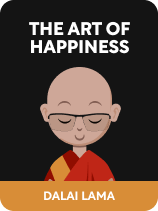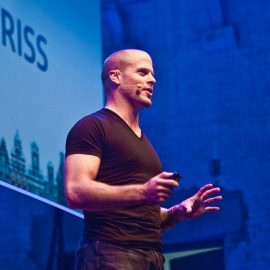

This article is an excerpt from the Shortform book guide to "The Art of Happiness" by Dalai Lama. Shortform has the world's best summaries and analyses of books you should be reading.
Like this article? Sign up for a free trial here .
Is it possible to find lasting happiness? Can true lasting happiness be found externally?
Lasting happiness is a mindset you build and isn’t contingent upon external characteristics, like wealth or status. Such factors can’t confer lasting happiness. You see this in daily life: when something great happens, like a promotion, you’re temporarily elated but soon return to your normal level of contentment. Similarly, if you suffer a setback, like a breakup, the negative feelings wear off.
Here is why lasting happiness is a mindset that requires deliberate effort to cultivate.
Cultivating a Happiness Mindset
Happiness that is based on external events (e.g. promotion) is fragile because of the phenomenon called “hedonic adaptation”—when positive or negative emotions wear off, they have a less pronounced effect on mood, and mood returns more quickly to the baseline. If you keep getting promoted, for instance, the promotions will leave you less happy for less time.
According to the Dalai Lama, lasting happiness is not contingent on external factors—it’s a mindset. The Dalai Lama warns that cultivating a happiness mindset takes time and experimentation. But, adds Cutler, it’s not impossible: Your brain is malleable, and you can rewire it to elevate your general level of happiness.
(Shortform note: Beyond having malleable—what’s referred to in neuroscience as “plastic”—brains, you can enhance the plasticity of your brain by learning new skills, getting plenty of high-quality sleep, and exercising regularly.)
Cultivate a Happiness Mindset in 3 Steps
The Dalai Lama believes there are three steps to cultivating a happiness mindset: education, development of motivation, and exertion. We’ll look at each step in the next three chapters.
(Shortform note: Other parts of Buddhist teachings are separated into three steps comparable to the ones outlined by the Dalai Lama here. The Threefold Way, for instance, consists of first establishing self-discipline (or ethics), then concentration (or meditation), and finally, wisdom.)
Step 1: Educate Yourself
To cultivate your happiness mindset, educate yourself both about your emotions and the circumstances that give rise to them, counsels the Dalai Lama. By doing this, you root out the misunderstandings of the world that lead to negative emotions and therefore unhappiness.
To perform this educational self-analysis, think about when you’re happy and unhappy. Then, consider the feelings that led to your happiness or unhappiness. You’ll find that feelings like anger and hatred make you unhappy and hurt you and others, says the Dalai Lama. Because they’re hurtful, you’ll know these are negative emotions and that they’re based on a misunderstanding of the world.
Step 2: Develop Your Motivation to Change
After educating yourself on how and why you become happy or unhappy, the next step of cultivating a happiness mindset is to develop your motivation to change your mindset, advises the Dalai Lama.
Simply understanding what makes you unhappy can’t alone eradicate unhappiness, claims the Dalai Lama. You must desire to rid yourself of unhappiness and negative emotions.
(Shortform note: Cutler and the Dalai Lama tell you to motivate yourself to change but don’t provide tools for doing so. One way to cultivate motivation is to write down the goals you hope to achieve—for instance, to rid yourself of ignorance. Achieving enlightenment is a long and winding path, but by writing down your goals, you help yourself stay on that path.)
Step 3: Exert Yourself to Change
Now that you’ve developed the motivation to change your mindset, the final step of cultivating a happiness mindset is to make the effort to change, says the Dalai Lama. We’ll discuss two strategies to make that effort.
(Shortform note: This chapter falls within the Right Effort step of the Noble Eightfold Path because the following strategies concern altering your thinking—not, as you might think, your actions. In the book, Cutler and the Dalai Lama spend the most time on the Meditation and Wisdom parts of The Threefold Way, and little time on the Ethics part, which concerns behavior, speech, and livelihood.)

———End of Preview———
Like what you just read? Read the rest of the world's best book summary and analysis of Dalai Lama's "The Art of Happiness" at Shortform .
Here's what you'll find in our full The Art of Happiness summary :
- The Dalai Lama's Buddhist path toward happiness
- The use of scientific evidence to support the Dalai Lama's beliefs
- Concrete actions you can take to improve your outlook on life, relationships, and resilience






